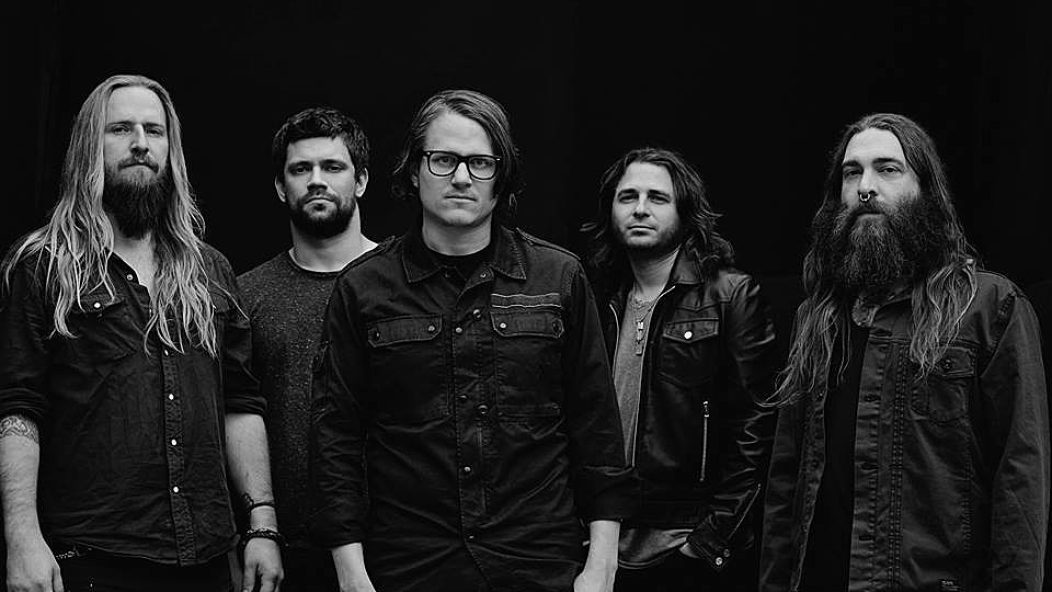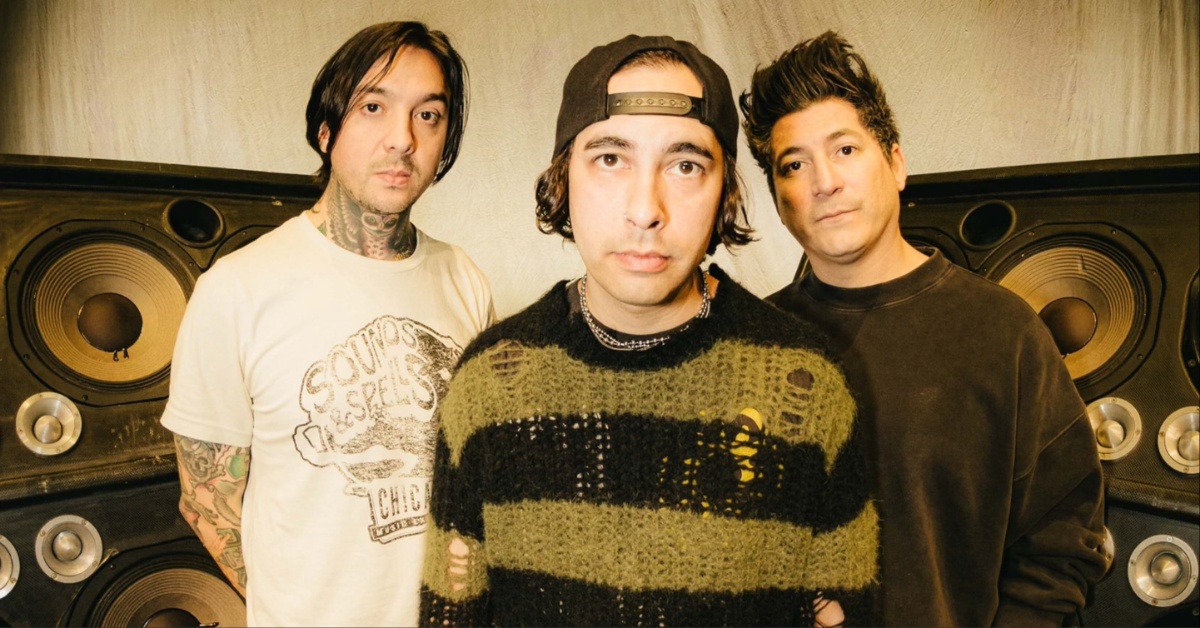
So Grim So True So Real: Darkest Hour

. . .
By releasing Godless Prophets & The Migrant Flora, Washington DC’s Darkest Hour have entered the uncommon class of bands that deserve respect for their endurance alone. They’ve lived through several generations of hardcore and metal trends, bending with the times but never breaking entirely. Even their furthest concessions to the flavor of the week still had the taste of Darkest Hour to it. This new record proves that 2014’s self titled record wasn’t a permanent move towards pop-metal, but part of their habit of constant tinkering. The same process that led them to incorporate more clean vocals than ever on their last record pushed them in this one’s more instrumental heavy and prog-inflected direction.
As with any band that has steadily released albums of mostly similar high quality, figuring how where to start with their lengthy discography can be tricky. That’s why we’re back once again with another edition of So Grim So True So Real to guide you through Darkest Hour’s criminally underrated body of work.
. . .

. . .
So Grim: Darkest Hour (2014, Sumerian)
Not all of Darkest Hour’s records are underrated, however. Some of them, like 2014’s Darkest Hour deserve the dismissal they’ve received from the metal crowd. Like many band’s worst records, Darkest Hour sounds like the band as described by their most ardent critics. After years of sticking to their guns and hewing closer to the melodic death metal playbook than any of their contemporaries, their self-titled record adopted the same good-cop bad-cop cookie cutter approach that they had avoided during that style’s heyday. In the process they completely flattened their personality, reducing their individual players to something closer to a session backing band.
It isn’t a total wash, guitarist Mike Schleibaum is a good enough songwriter to make even the most rote cliches entertaining in the right doses. Darkest Hour blows right past any reasonable prescription and right into malpractice territory. The band rely on the same emotional tenor for each chorus, pounding away on 8th notes in an effort to create a huge sound that invariably becomes static and unremarkable. Singer John Henry gives it his all, showing a melodic range that no one could have predicted back when he first started incorporating clean vocals. It’s even possible to understand why the band would have taken this direction absent of cynicism. After so many years of incremental change, taking a big swing like this is on paper an exciting change of pace. But no amount of good faith can mask that going Djent in 2014 is not a good look.
. . .
. . .

. . .
So True: Undoing Ruin (2005, Victory)
Released right as melodic metalcore was surging in popularity, Undoing Ruin is responsible for Darkest Hour as being thought of anything but a metal band. Paired alongside of your As I Lay Dying’s and Unearth’s, Darkest Hour’s loving tribute to the Gothenburg sound was in good company. It’s a minor distinction, but Darkest Hour were former hardcore kids playing metal rather than a proper metalcore band. Of course John Henry’s “I love the Postal Service” haircut didn’t do them many favors either, but it was clear that they were operating in the tradition of In Flames and Dark Tranquillity. They never resorted to cobbling together breakdowns and At The gates scraps to win over white-belters in the cheap seats.
But fuck it, if the shoe fits, wear it. Undoing Ruin is a terrific album, regardless of which subculture you want to tie it to. The record’s popularity is well warranted in either case. From top to bottom, it is the strongest batch of songs that Darkest Hour have released. Kris Norris, the fleet fingered shredder that joined for the band’s previous album, Hidden Hands Of A Sadist Nation, is the star of the show, sprinkling sweeps and harmonized leads into the band’s beefy songwriting like Salt Bae with an Ibanez. Norris’s ability to convey real hummable melodies even when blazing through arpeggios turned out to be a perfect fit for Devin Townsend, whose bright and colorful production on Undoing Ruin might be his finest for any band other than his own. The record is teeming with harmonies and pads bubbling under the surface. These details help give the record’s obvious singles, “Convalescence” & “Sound The Surrender” replay value beyond their magnetic hooks, and add nuance to aggressive tracks on Side B.
That heavier back half is where Darkest Hour’s hardcore lineage reveals itself, not because they necessarily sound like punk band, but because they write like one. Even though Undoing Ruin sports two instrumental interludes and a lengthy jam coda to its final track, it zips by in a cool 37 minutes. There isn’t a wasted second, each song establishes an identity, hits a climax and gets the hell out of dodge. The band’s DC hardcore roots might also be the root of the album’s atypical optimism. Undoing Ruin’s focus on self-care and positivity isn’t spiritually dissimilar to Hatebreed’s emphasis on self-improvement and perseverance. By threading these themes into the fabric of the best songwriting of their career, Darkest Hour made a record that remains unique to this day.
. . .
. . .

. . .
So Real: Hidden Hands Of A Sadist Nation (2003, Victory)
Let’s nip one thing in the bud first. If you’re like me, you may have been feeling the urge to dust off some of your old favorites from the Bush era to see whether they offer any relief in this day and age. While Hidden Hands Of A Sadist Nation does have an underlying feeling of dread and gravitas that’s applicable to life in 2017, its critiques of American culture are firmly rooted in the anxieties of the early aughts. This doesn’t mean it’s not good music for the times, just that it’s music born of a specific era and that it’s best appreciated as such.
Because god damn does this record kick ass. For those who mostly know the band for their post-Undoing Ruin releases, Hidden Hands is going to sound rough and unrefined, and to be sure it is Darkest Hour’s meanest album by a considerable margin. They’ve never made an album quite like this again. It’s not a matter of heaviness, or density. It’s the pacing. Their willingness to ride out a bit further on a passage here or there, There’s a looseness too, which betrays the band’s hardcore background. This is music that works better in the bunker than in the theater. Their harmonic range expanded to fit the room they played in as the band’s profile rose, but the tighter focus here gives the album its character.
For a band as stylistically consistent as Darkest Hour, records are most easily distinguished from each other by production, or by outside collaborators. Hidden Hands sticks out in this regard too. Darkest Hour flew out to Gothenburg to record with Fredrik Nordström, and recruited Peter Wichers of Soilwork, and Tomas Lindberg and Anders Björier of At The Gates for guitar solos and a show stealing guest verse. Here Darkest Hour don’t recall hardcore but hip-hop, where a cameo from a respected figure lends credibility but can also signify a passing of the torch.
I’m not suggesting that Darkest Hour were At The Gates reincarnate (before At The Gates themselves reincarnated), that is an opinion reserved for last call. Many of the songs stick around a bit longer than they need to, and Kris Norris had yet to come into his own. But at their best, like the bookends of ‘“Sadist Nation” and the instrumental “Veritis, Aequitas”, Darkest Hour carried the flame.
. . .
. . .











